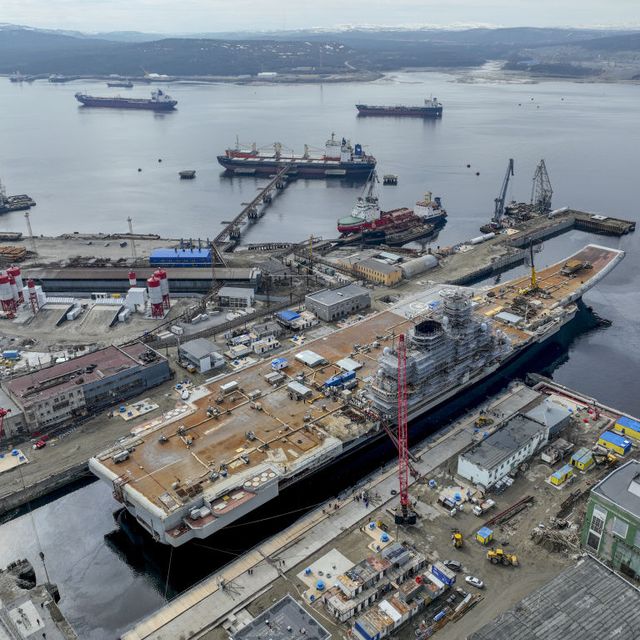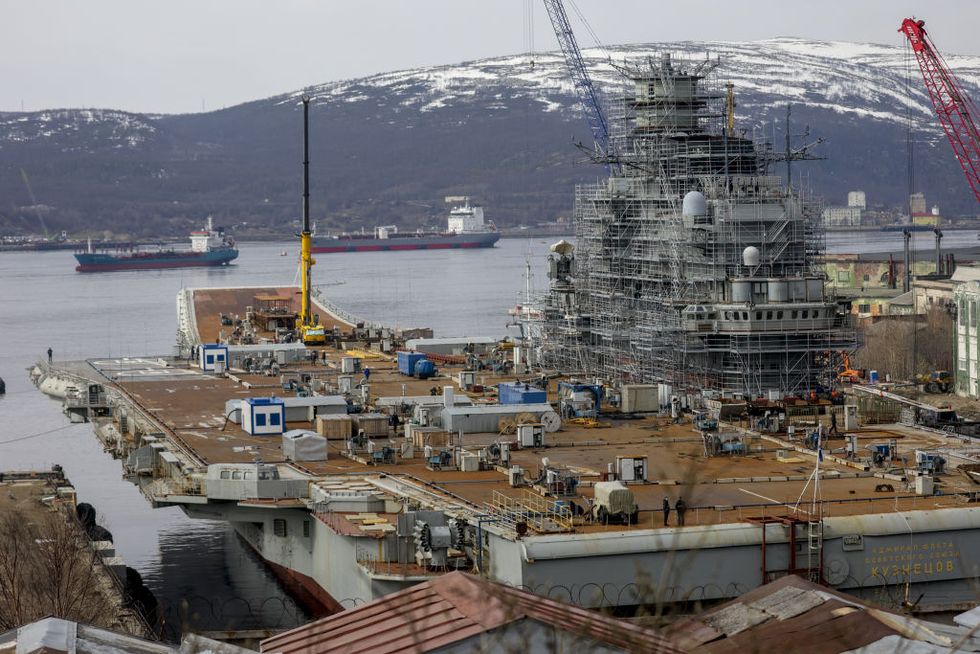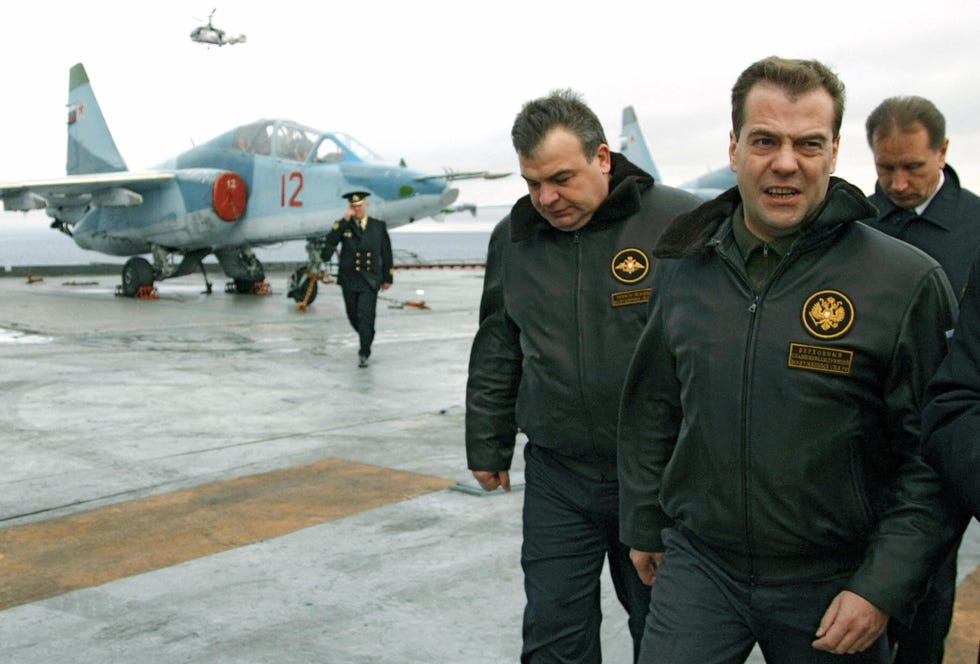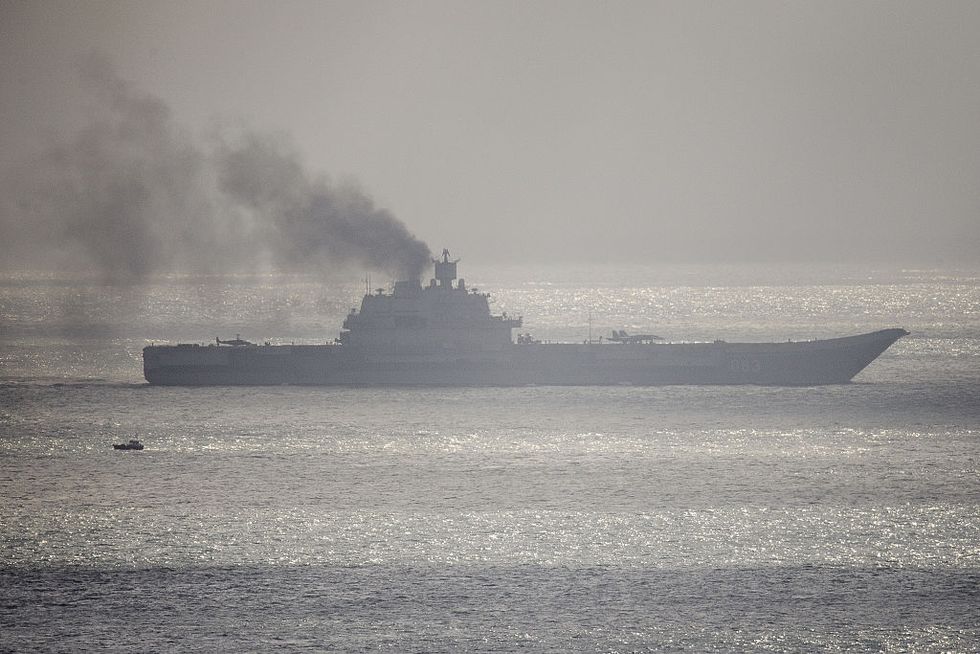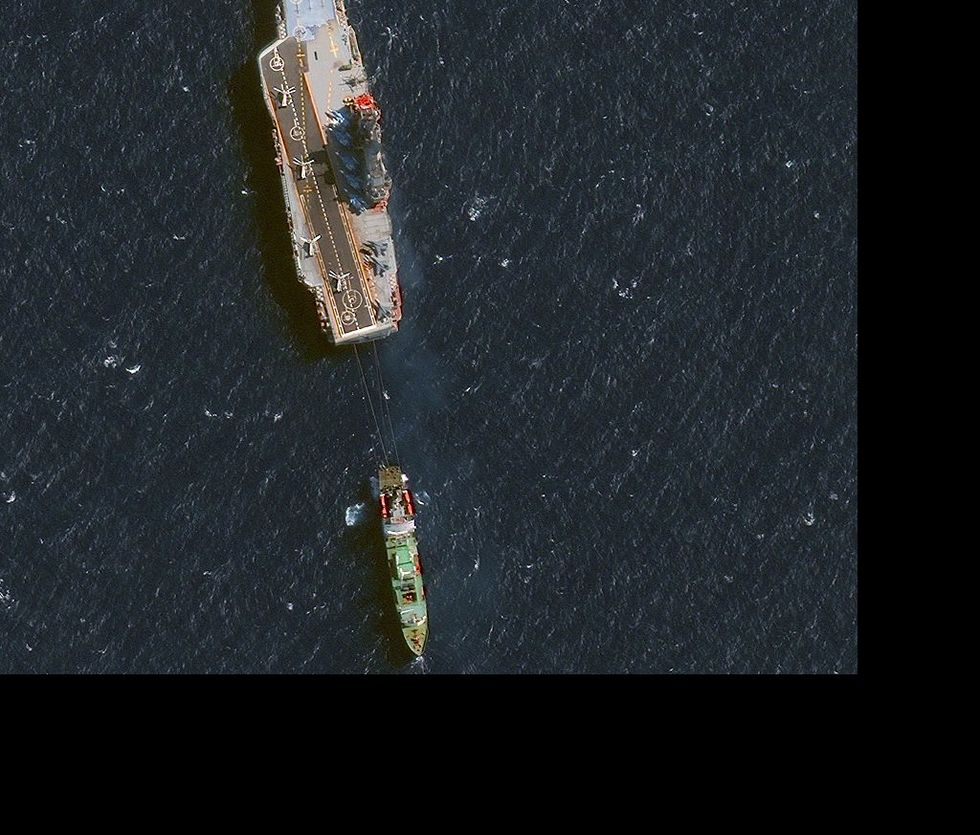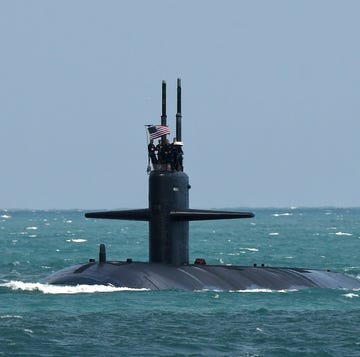- The Russian aircraft carrier Admiral Kuznetsov has left drydock early.
- The aircraft carrier has been undergoing an extended refit that is already at least two years behind schedule.
- Kuznetsov is in such poor condition that it should probably be scrapped, but Russia won’t let the ship go without a replacement.
Russia’s only aircraft carrier, the Admiral Kuznetsov, has left drydock—a rare bit of good news for a ship plagued by decades of hard luck. That means things are also looking up for the drydock, which is probably now out of danger.
But nothing is certain with this warship, which frankly seems cursed at this point.
The carrier is in the sixth year of a planned four-year refit, and officials say the ship won’t be seaworthy until 2024, if ever; the upgrade is supposed to add 10–15 years to the ship’s lifespan. The carrier has survived fires, floods, collisions, the sinking of its drydock, aircraft accidents, and then some—more incidents, it seems, than what the U.S. Navy’s 11 modern carriers have been through combined.
Light at the End of the Tunnel?
On February 21, United Shipbuilding Corporation, a Russian state-owned company, announced that Admiral Kuznetsov had finally been towed out of drydock, according to Naval News. That’s great news for the Russian Navy, but the refit process began in 2017 and was supposed to be completed by 2020.
✅ Know Your Terms: A drydock is an enclosure that a ship enters in order to do work below the waterline. After a ship sails into a drydock, watertight doors seal it shut. The water in the drydock is pumped out, and the ship is left sitting on the bottom of the drydock floor.
The refit was meant to replace four of the ship’s eight turbo-pressurized boilers and refurbish the remaining four. Improvements to flight operations included a new deck coating, a larger hangar, and new aircraft-arresting gear. Improvements to the ship’s self-protection suite were supposed to include new air defenses. Electronic upgrades should have included new electronic warfare, communications, intelligence, navigation, and combat control complexes.
But at the last minute, the Russian government pulled the rug out from under United Shipbuilding Corporation, funding only half of the original $866 million budget. That was a bad start for the refit process, but it quickly became clear that this was par for the course for what might be the world’s most unlucky warship.
An Impressive Ship … on Paper
The Admiral Kuznetsov is Russia’s only aircraft carrier. The ship was laid down at the Soviet dockyards in Nikolayev in April 1982, in what is now Mykolaiv in Ukraine. The carrier was finally completed in 1991 as the Admiral Flota Sovetskogo Soyuza Kuznetsov, or Admiral of the Fleet of the Soviet Union Kuznetsov. Unfortunately for the ship, the Soviet Union had mere months left before it was officially dissolved in December 1991.
At 1,000 feet and 58,000 tons, Kuznetsov is smaller and lighter than her American counterparts. The ship is designed to operate an air wing of just 24 fighters and six helicopters—half the air complement of a Ford-class carrier. The ship’s aging air wing of Su-33, MiG-29K, and Su-25 jets is also technologically falling farther and farther behind Western air forces. It is, however, equipped with 12 huge P-700 Granit anti-ship missiles, giving her formidable striking power even without her aircraft embarked.
Kuznetsov is officially classified as a “heavy aviation cruiser.” The Montreux Convention that gives Turkey authority over the Bosphorus Strait prohibits the transit of aircraft carriers. That posed a problem since the ship was built in the Black Sea and would otherwise be trapped there, unable to sail the thousands of miles to her homeport of Murmansk, Russia. To solve this issue, the Soviet Union simply changed the type classification of the ship, and Turkey has looked the other way ever since.
A Cursed History
The Russian Federation inherited Kuznetsov after the collapse of the Soviet Union. The ship spent most of 1991–2015 in port, as Russia was unable to afford the cost of maintaining her; the ship went to sea just six times during this period. In 2016, Kuznetsov and her escort, the oceangoing tug Nikolai Chiker, made it all the way to Syria, where she conducted flight operations in support of the Syrian government. She returned to Russia in 2017 to enter the upgrade program.
Throughout her life, Kuznetsov has seen her share of bad luck. In 2009, off the coast of Turkey, an electrical fire broke out aboard the ship, killing one crewman. In 2012, she broke down in the Bay of Biscay, off the coast of France, and Chiker had to tow her in heavy seas. Then in 2016, while intervening in the Syrian Civil War, she lost two aircraft, a MiG-29K and a Su-33, in just three weeks; in both cases, the losses were likely due to the poor condition of the ship.
You might think that Kuznetsov and those around her would be safe with the ship in port, under refit—but you would be wrong. In 2018, the floating drydock PD-50 sank just as Kuznetsov sailed out from under it. A 70-ton crane collapsed during the sinking, knocking a 16-foot-wide hole in the side of the hull. In 2019, a fire killed two construction workers. In December 2022, a fire broke out again aboard the ship.
The Takeaway
It looks like Kuznetsov will make it back to the fleet, barring another fire, collision, or flood—how effective it will be in service is another matter altogether.
It’s safe to say a lot of the ship’s issues were self-inflicted, and the Russian Navy is still the same Russian Navy that took such subpar care of the ship to begin with. Russia is reluctant to retire the ship until it can be replaced, and while it has announced grandiose plans to build new ships in the past, nothing has ever come of them.
If Kuznetsov makes it to 2040, it will be nothing short of a miracle, but if recent events are any indication, Russia is all out of miracles.

Kyle Mizokami is a writer on defense and security issues and has been at Popular Mechanics since 2015. If it involves explosions or projectiles, he's generally in favor of it. Kyle’s articles have appeared at The Daily Beast, U.S. Naval Institute News, The Diplomat, Foreign Policy, Combat Aircraft Monthly, VICE News, and others. He lives in San Francisco.
